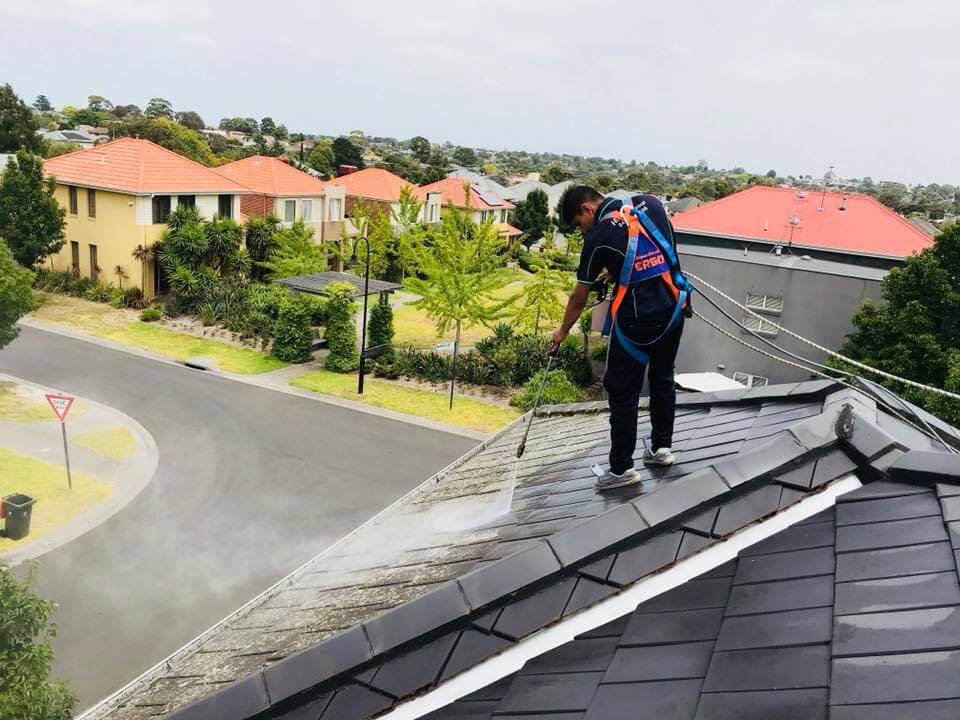While most people know that roof gutter cleaning in Melbourne is an important home maintenance task, not everyone realises that downspouts are part of this job. It can be easy to see when your gutters are clogged, but it’s not always so obvious if your downspouts are. Unfortunately, you’ll soon know when there’s lots of costly water damage to repair. Therefore, in order to reduce the risk of water damage, it is essential to opt for regular gutter cleaning in Melbourne.
Why you need to clean your downspout
Downspouts are an often-overlooked part of guttering system maintenance. Just because we can’t see them working like we can a gutter, it doesn’t mean they don’t have an important job to do. Even if your gutters are squeaky clean, they won’t be able to channel water away from your home if the downspout is blocked.
A blocked downspout and a malfunctioning guttering system mean you can expect water damage. Water damage is a phrase that strikes fear in all homeowners’ hearts and for good reason. It can be minor or major, causing aesthetic damage or structural damage to a home, often requiring costly roof repairs.
If your gutters overflow because of a blocked downspout, you can expect to see water stains on both your interior and exterior walls. Water may start leaking inside your roof and this can cause serious water damage to ceilings and your roof structure. Mould may also start to flourish in this environment.
Overflowing gutters can also lead to water pooling around the base of your home. Over time, this excess moisture can seep into the ground causing damp problems and even foundation problems. Cracks in your foundations can make your home structurally unsound and are incredibly expensive to fix.
Clearly, a clogged downspout is just as bad as a clogged gutter. So how do you deal with it?
Signs your downspout is clogged
It can be tricky to tell if your downspout is clogged. The way downspouts are built makes visual confirmation difficult. But there are some things you can look for.
Look at the gutters around the downspout. When a downspout is clogged, the water backs up and will start to pool in the gutters. Since gutters are designed to channel flowing water, not support the weight of pooling water, you may start to notice gutter damage.
For instance, the gutters may be starting to break or pull away from the roof or sections may be separating from one another. If this is happening, water damage may already have occurred and you need to fix the problem caused by clogged roof gutters as soon as possible before it gets any worse.
If it’s raining, you may even see water continually spilling over the edge of the gutter. Alternatively, you can look at the downspout. When it’s raining, there may be little to no water coming out of it at all.
If it’s not raining, you can feed a hose into the top of your downspout and see what comes out the other end.
You might see that the paint on the wall is starting to peel or there is a water stain. Either are clear indicators that both the downspout isn’t working and you’ve got water damage. If you’re lucky, it’ll be mostly aesthetic, but roof gutter cleaning can still cost a lot to fix even that kind of damage.
How to unclog your downspout
If you noticed one or more of the above signs, it’s fair to say that your downspout is clogged and a bill for water damage repair is not far away. You need to get that downspout unclogged now and here’s how to do it.
unclogged now and here’s how to do it.
- Start with your gutters
If there’s any debris in your gutters, it needs to be taken out beforehand. Otherwise, it may just clog your downspout all over again. You can use a garden trowel or your hands to get out any leaves, dirt and debris. To ensure all blockages are effectively cleared, remove the bottom downspout extension using a screwdriver if needed, and tap or dig out any debris lodged at the base. This step allows for easier removal of stubborn dirt and leaves that may have accumulated in the downspout. - Work from the bottom up
Most clogs are at the bottom of your downspout as the water pressure slowly forces them down. Divert the flow of your downspout and reach inside it. Remove as much debris as you can. Using a hose, you can then flush water down the downspout to clear out anything else. A wet/dry vacuum, which might be safer or more effective for certain other blockages. This is usually enough for most clogs. - Force the clog loose
If the clog remains, there are a few things you can try. For starters, you may just need to knock your fist along the side of the downspout to shake the mass loose. If this doesn’t work, you can try using a pressure washer or handheld auger. Ensure you’re wearing protective gear when working with either power tool. The high-pressure water or auger cable should be able to force the clog out. Using a garden hose to flush out blockages and an auger as needed, with guidance for positioning a ladder securely to access both the top and bottom of the downspout, should push the clog out. Take care not to damage your downspout in the process. - Call the experts
If the clog just won’t budge or you don’t feel comfortable with the task, call the experts. Not only can they get that clog to budge, they can ensure that your gutters are in good shape to handle future rain.
Contact Us Today
The Himalayas Group are Melbourne’s experts when it comes to all roof and gutter cleaning services. They can ensure your guttering system is working as it should and help prevent further water damage to your home, saving you plenty of cash. To book a clean today, call 0415 841 606.


